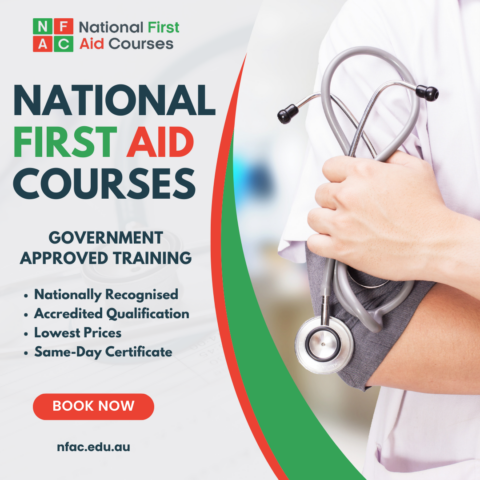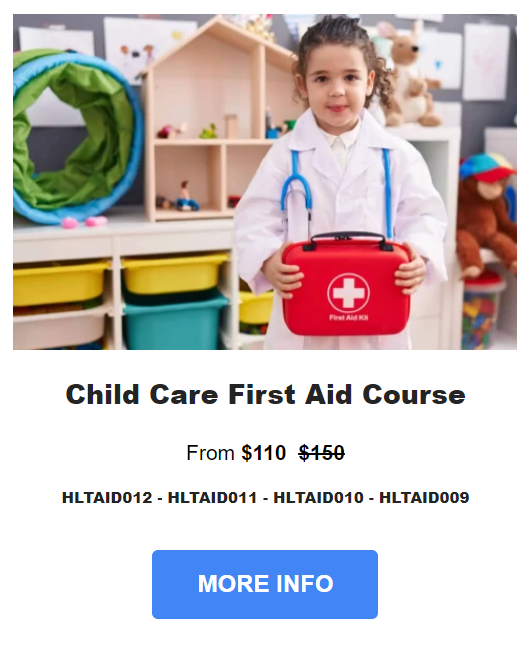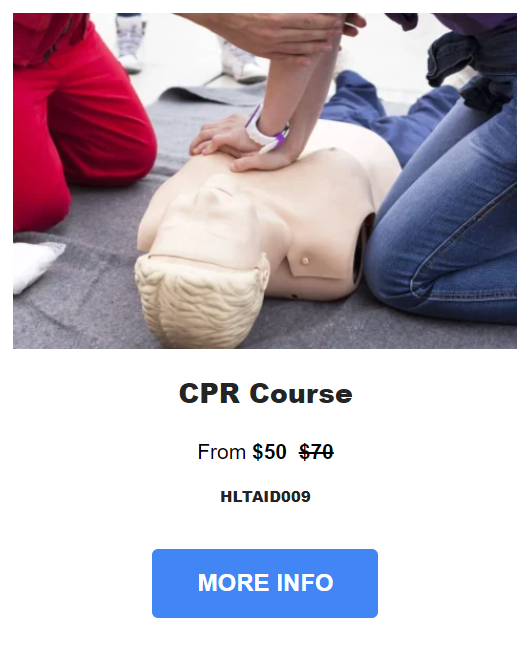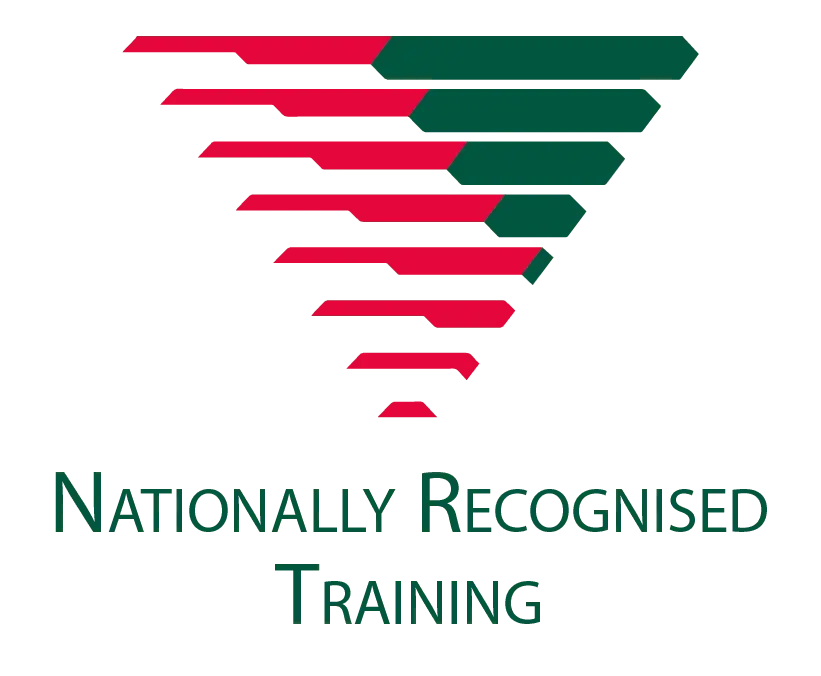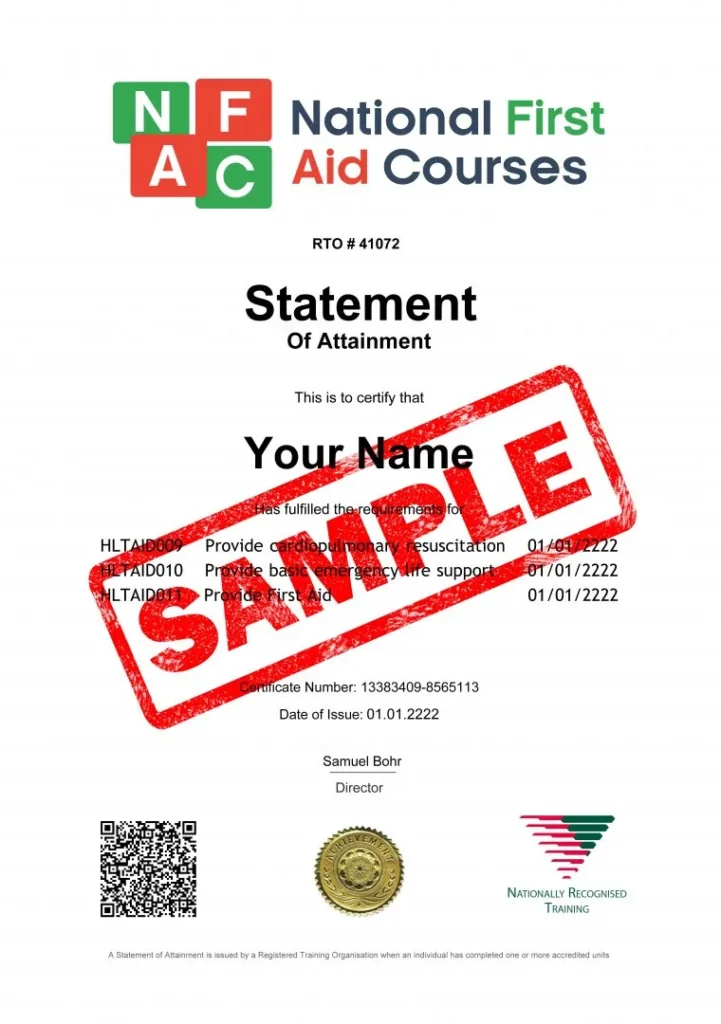
Table of Contents
Key Takeaways
- ✓ Understand the Differences: Learn about the key distinctions between HLTAID009, HLTAID010, HLTAID011, and HLTAID012 courses to select the training that suits your needs.
- ✓ Meet Compliance Requirements: Ensure you are meeting workplace or industry standards with nationally recognized First Aid certifications in Australia.
- ✓ Gain Life-Saving Skills: Equip yourself with critical First Aid knowledge to respond effectively in emergencies, whether at work, home, or in public settings.
- ✓ Boost Your Employability: Holding a First Aid certificate makes you more competitive in roles that value safety and emergency preparedness.
- ✓ Flexible Learning Options: Discover various training formats, including in-person, online, and blended courses, to suit your schedule and preferences.
Introduction
Imagine this: you’re the first to arrive at the scene of an emergency.
In those critical moments, what you do next could potentially save a life. Your actions and ability to respond can make all the difference.
First aid training isn’t just another skill; it’s an essential tool that empowers you to take decisive action when it matters most.
In Australia, where safety regulations are strict, holding a first aid certification is not just a recommendation — it’s often a legal requirement in many workplaces, schools, and different community groups (such as sporting clubs and volunteer programs).
Whether you’re looking to fulfil a professional requirement or simply want the peace of mind that comes with being prepared, understanding the ins and outs of first aid certification is crucial.
This guide will provide you with all the knowledge you need to make an informed choice about your first aid training, ensuring you’re ready to respond accordingly when the unexpected happens.
By the end, you’ll know exactly how to choose the right course, what to expect, and how your first aid certification can elevate your ability to protect those around you.
Understanding First Aid Certifications
When it comes to first aid training, several certifications cater to different needs and professions.
Understanding these certifications is essential for selecting the right course for you.
Here’s a clear breakdown of the most common first aid certifications in Australia:
HLTAID009 - Provide Cardiopulmonary Resuscitation (CPR)
Overview: This course is solely dedicated to CPR techniques and procedures.
Certification: Participants receive a nationally recognised certificate valid for 12 months.
Ideal For: Individuals who have been directed by their employers to renew their CPR certification, as well as those who need to complete the CPR unit independently.
CPR Course Elements and Performance Criteria:
| Elements | Performance Criteria |
|---|---|
| 1. Respond to an emergency situation. |
|
| 2. Perform CPR procedures. |
|
| 3. Communicate details of the incident. |
|
| 4. Review the incident. |
|
HLTAID010 - Provide Basic Emergency Life Support
Overview: This course focuses on essential life support skills, emphasising the techniques needed to respond to emergencies effectively.
Certification: Participants receive a nationally recognised certificate valid for three years.
Ideal For: Individuals who need to provide emergency support but may not require the full scope of first aid training.
Provide Basic Emergency Life Support Course Elements and Performance Criteria:
| Elements | Performance Criteria |
|---|---|
| 1. Respond to an emergency situation. |
|
| 2. Apply appropriate first aid procedures. |
|
| 3. Communicate details of the incident. |
|
| 4. Review the incident. |
|
HLTAID011 - Provide First Aid
Overview: This comprehensive course covers a wide range of first aid skills necessary for managing medical emergencies and providing care in various situations.
Certification: Participants receive a nationally recognised certificate valid for three years.
Ideal For: Workplaces, community organisations, and individuals seeking extensive first aid knowledge.
Provide First Aid Course Elements and Performance Criteria:
| Elements | Performance Criteria |
|---|---|
| 1. Respond to an emergency situation. |
|
| 2. Apply appropriate first aid procedures. |
|
| 3. Communicate details of the incident. |
|
| 4. Review the incident. |
|
HLTAID012 - Provide First Aid
Overview: This specialised certification is designed for individuals working in educational and childcare environments, focusing on the unique needs of children and infants.
Certification: Participants receive a nationally recognised certificate valid for three years.
Ideal For: Early childhood educators, school staff, and support personnel who require first aid skills tailored to educational settings.
Provide First Aid in an Education and Care Setting Course Elements and Performance Criteria:
| Elements | Performance Criteria |
|---|---|
| 1. Respond to an emergency situation. |
|
| 2. Apply appropriate first aid procedures. |
|
| 3. Communicate details of the incident. |
|
| 4. Review the incident. |
|
Importance of First Aid Training
First aid training is more than just a valuable skill – it’s a critical component of workplace safety, emergency preparedness, and community resilience. By equipping individuals with the knowledge and skills to respond effectively in crisis situations, first aid training can save lives and minimise the impact of injuries and illnesses.
Workplace Safety and Productivity
In Australia, many workplaces are legally required to have a certain number of trained first aiders on-site at all times.
This ensures that employees have access to immediate medical assistance in the event of an accident or sudden illness.
By providing first aid training to your staff, you can:
- Reduce the severity of workplace injuries and improve recovery times.
- Minimise the risk of legal liabilities and workers’ compensation claims.
- Boost employee morale and productivity by demonstrating a commitment to their well-being.
Emergency Preparedness
First aid training is not just for the workplace – it’s a valuable skill for individuals and communities to have in case of emergencies.
Whether it’s a natural disaster, a terrorist attack, or a simple accident, having a population that is trained in first aid can significantly improve the chances of survival and recovery.
By investing in first aid training for your community, you can:
- Increase the resilience of your local area in the face of unexpected events.
- Reduce the burden on emergency services by empowering citizens to provide initial care.
- Foster a sense of community spirit and preparedness.
Impact of First Aid Training in the Real World
Studies have shown that first aid training can significantly improve the outcomes of medical emergencies.
Here are some relevant statistics that highlight the importance of first aid training:
- Survival Rates: According to the Australian Resuscitation Council, Every minute without CPR and defibrillation reduces a person’s chance of survival by 10%. This underscores the critical role that timely intervention plays in cardiac emergencies.
- Bystander Intervention: Research indicates that when bystanders are trained in CPR, they are more likely to intervene during a cardiac arrest. A study published in the Medical Journal of Australia found that bystander CPR increases the likelihood of survival by up to three times compared to situations where no CPR is administered.
- Confidence Levels: A survey conducted by St John Ambulance revealed that while 72% of Australians have witnessed a health or medical emergency, only 47% feel confident in their ability to provide first aid in these situations. This highlights the need for more widespread training to empower individuals to act in emergencies.
- First Aid in Schools: St John Ambulance’s First Aid in Schools Program has trained over 1,000,000 school children across Australia since 2012, illustrating the importance of instilling first aid knowledge from a young age.
By ensuring that more people are trained in first aid, we can increase the likelihood of positive outcomes in emergency situations.
Different Types of Course Formats Available
When it comes to first aid training, there are several course formats available to suit different learning preferences and schedules.
Here’s a detailed comparison of the most common options:
In-Person Training
Overview: Traditional face-to-face classes led by qualified instructors.
Pros:
- Hands-on practice and immediate feedback from instructors.
- Opportunity to learn from and interact with other participants.
- Certificates are issued upon successful completion of the course.
Cons:
- Less flexibility in terms of scheduling and location.
- May require taking time off work or travel to the training site.
Online Courses
Overview: Self-paced learning modules completed through a digital platform.
Pros:
- Flexible scheduling that allows you to learn at your own convenience.
- Cost-effective option as there are no travel or accommodation expenses.
- Ability to review course materials as needed.
Cons:
- Limited hands-on practice and skill assessment.
- Certificates may not be issued until a practical assessment is completed.
- Requires a stable internet connection and self-discipline to complete the course.
Blended Learning
Overview: A combination of online learning and in-person practical training.
Pros:
- Offers the flexibility of online learning with the benefits of hands-on practice.
- Allows for more efficient use of face-to-face training time.
- Certificates are issued upon successful completion of both online and practical components.
Cons:
- Requires a higher level of commitment to complete both online and in-person training.
- May be more expensive than online-only or in-person-only courses.
When choosing a course format, consider factors such as your learning style, schedule, and access to training facilities.
Online and blended learning options are becoming increasingly popular due to their flexibility.
However, in-person training remains essential for developing practical skills, receiving immediate feedback from instructors, and obtaining a nationally recognised First Aid certificate.
Any First Aid course that is conducted solely online is most likely not a nationally accredited course.
How to Choose the Right First Aid Course
Selecting the right first aid course can be a daunting task, especially with various options available.
To help you make an informed decision, consider the following factors:
Your Profession
- Consider your industry: Different professions have specific first aid requirements. For example, educators and childcare workers may need HLTAID012, while those in corporate settings might opt for HLTAID011.
- Legal requirements: Check if your workplace has mandated first aid training and what certifications are required.
Course Content and Accreditation
- Review the syllabus: Ensure the course covers essential topics relevant to your needs, such as CPR, wound management, and emergency response.
- Accreditation: Verify that the course is nationally recognised and accredited by relevant authorities, such as the Australian Skills Quality Authority (ASQA).
Delivery Format
- Choose a format that suits you: Decide between in-person, online, or blended learning based on your learning style and schedule.
- Hands-on practice: If practical skills are crucial for your role, consider courses that offer in-person training.
Duration
- Time commitment: Assess how much time you can dedicate to the course. Some courses may require only a few hours, while others may take several days.
- Workplace flexibility: Ensure that the course duration aligns with your work commitments or personal schedule.
Certification and Renewal
- Understand certification validity: Check how long the certification is valid (e.g., HLTAID009 is valid for 12 months, while HLTAID011 and HLTAID012 are valid for three years).
- Recertification requirements: Be aware of the renewal process and any refresher courses needed to maintain your certification.
Instructor Qualifications
- Check instructor credentials: Ensure that the trainers are qualified and experienced in delivering first aid training.
- Participant feedback: Look for reviews or testimonials from previous participants to gauge the quality of instruction.
By carefully considering these factors, you can choose a first aid course that best fits your professional needs and personal goals.
Recertification Process
Maintaining your first aid certification is crucial to ensure that your skills and knowledge remain current and effective.
Here’s what you need to know about recertification for various first aid courses in Australia:
Course Completion: To recertify, you will typically need to complete a refresher course or the full course again, depending on the training provider’s requirements.
Practical Assessments: Many refresher courses include practical assessments to ensure you can perform essential skills effectively.
Documentation: Upon successful completion of the recertification course, you will receive an updated certificate that reflects your renewed qualifications.
Importance of Recertification
Skill Retention: Regular recertification helps reinforce your knowledge and skills, ensuring you are prepared to respond effectively in emergencies.
Updated Practices: First aid guidelines and techniques can evolve over time. Recertification ensures you are aware of the latest practices and protocols.
Confidence Building: Keeping your certification current boosts your confidence in your ability to provide first aid when needed, ultimately benefiting your workplace, community, or family.
Real-Life Applications of First Aid Skills
By being prepared and knowledgeable, you can make a meaningful difference when it matters most.
The following scenarios highlight the invaluable role first aid training plays in everyday life and emergency situations.
Cardiac Arrest
Scenario: A colleague collapses during a meeting and is unresponsive.
Response: Immediate recognition of cardiac arrest and the initiation of CPR can double or triple the chances of survival. Knowing how to use an Automated External Defibrillator (AED) can further increase the likelihood of a positive outcome.
Impact: Quick action can mean the difference between life and death, as every minute without CPR reduces the chance of survival by 10%.
Providing effective CPR and using an AED can restore normal heart function and breathing, preventing brain damage and increasing the chances of a full recovery.
Knowing how to perform these life-saving techniques can give the individual the best possible chance of survival until emergency medical services arrive.
Choking
Scenario: A child at a birthday party suddenly starts to cough and then becomes unable to breathe, indicating they may be choking.
Response: Administering the Heimlich maneuver or back blows can help dislodge the obstruction. First aid training teaches you how to assess the situation and respond appropriately.
Impact: Timely intervention can prevent serious injury or death from choking, especially in children who are more susceptible to airway blockages.
Performing the Heimlich maneuver or back blows can quickly clear the airway, allowing the child to breathe normally again.
This immediate action can save a life and prevent long-term consequences such as brain damage due to lack of oxygen.
Being able to respond calmly and effectively in a choking situation can make a significant difference in the outcome.
Severe Allergic Reactions (Anaphylaxis)
Scenario: A friend experiences a severe allergic reaction after eating a meal containing nuts.
Response: Recognising the signs of anaphylaxis and administering an epinephrine auto-injector (EpiPen) can be life-saving. First aid training teaches individuals how to identify symptoms and act quickly.
Impact: Rapid administration of epinephrine can reverse the effects of anaphylaxis, preventing further complications and ensuring the individual receives necessary medical care.
Having the ability to identify the signs of anaphylaxis, such as difficulty breathing, swelling, and a rapid pulse, and administering an EpiPen can be the difference between life and death.
Timely treatment can stabilise the individual’s condition until emergency medical services arrive, potentially saving their life and preventing long-term health consequences.
Wound Management
Scenario: A construction worker accidentally cuts their hand while handling sharp tools or materials on the work site.
Response: Knowing how to properly clean and dress the wound is crucial in a construction environment. First aid training teaches individuals to assess the severity of the cut, control bleeding by applying direct pressure, clean the wound with sterile water or saline to prevent infection, and apply a sterile dressing or bandage to protect the wound.
Impact: Effective wound management can reduce the risk of infection and complications, ensuring a quicker recovery.
In a workplace setting, prompt and appropriate care not only supports the injured worker’s health but also helps maintain overall workplace safety and productivity.
Proper wound care can prevent the need for hospitalisation, reduce lost work time, and ensure a smooth recovery for the injured worker, ultimately benefiting both the individual and the company.
Sports Injuries
Scenario: A player collapses on the field with a suspected sprained ankle or concussion.
Response: First aid training provides the skills to assess injuries, apply the R.I.C.E. method (Rest, Ice, Compression, Elevation) for sprains, and recognise signs of concussion that require immediate medical attention.
Impact: Prompt and appropriate care can prevent further injury and ensure that the athlete receives the necessary treatment.
Applying the R.I.C.E. method to a sprained ankle can help reduce swelling, pain, and the risk of long-term damage.
Recognising the signs of a concussion, such as confusion, headache, and dizziness, and removing the athlete from play can prevent further head trauma and allow for proper medical evaluation.
Providing immediate first aid can help stabilise the injury, minimise pain and discomfort, and ensure the athlete receives timely and appropriate medical care — ultimately supporting a full recovery and a safe return to play.
Natural Disasters
Scenario: A community faces a natural disaster, such as a bushfire or flood, leading to injuries and emergencies.
Response: Individuals trained in first aid can provide immediate assistance to those injured, perform triage, and help manage the situation until professional medical help arrives.
Impact: Community members with first aid training can significantly enhance the overall safety and resilience of their neighborhoods during emergencies.
Performing triage to prioritise the most critical cases can optimise the use of limited resources and ensure that everyone receives the care they need.
Having trained individuals in the community can also help maintain calm and order during a crisis, fostering a sense of resilience and preparedness.
This collective first aid knowledge can make a substantial difference in the outcome of a disaster and the overall well-being of the affected community.
Common Myths About First Aid Training and Certification
Despite the clear benefits of first aid training, several misconceptions can prevent individuals from seeking this essential education.
Let’s address some of the most common myths and clarify the realities of first aid training.
Myth 1: First Aid Training is Only for Healthcare Professionals
Reality: First aid training is beneficial for everyone, not just healthcare workers.
Whether you are a parent, teacher, sports coach, or office worker, having first aid skills can empower you to respond effectively in emergencies.
In fact, many first aid courses are designed specifically for non-medical professionals, focusing on practical skills that anyone can learn and apply.
Myth 2: I Can Just Call for Help in an Emergency
Reality: While calling for professional help is crucial during emergencies, the first few minutes are often the most critical.
Immediate action can make a significant difference in outcomes, especially in life-threatening situations like cardiac arrest or severe bleeding.
First aid training equips you with the skills to provide initial care while waiting for emergency services to arrive, potentially saving a life.
Myth 3: First Aid Training is Too Complicated
Reality: First aid courses are designed to be accessible and straightforward, focusing on practical skills that can be easily understood and applied by almost everyone.
Most courses include hands-on practice, allowing participants to gain confidence in their abilities and respond swiftly to a wide range of emergency situations.
Myth 4: First Aid Certifications Last Forever
Reality: First aid certifications have specific validity periods and require renewal to ensure that your skills and knowledge remain current.
For example, CPR certification (HLTAID009) is valid for 12 months, while other first aid certifications (HLTAID011 and HLTAID012) are valid for three years.
Regularly updating your training ensures you are familiar with the latest practices and guidelines.
Myth 5: First Aid Training is Only Necessary for High-Risk Jobs
Reality: While certain professions, such as construction or healthcare, may have specific first aid requirements, emergencies can occur in any setting.
First aid training is valuable for everyone, as it prepares you to respond to a wide range of situations, from minor injuries to life-threatening emergencies (regardless of your job or lifestyle).
Preparing for Your First Aid Course and Training
Being prepared for your first aid course can enhance your learning experience and ensure you get the most out of the training.
Here are some tips on what to bring, how to prepare mentally and physically, and what to expect on the day of training.
What to Bring
Identification: Bring a form of photo ID, such as a driver’s license, passport, or student ID.
Notepad and Pen: Taking notes during the course can help reinforce your learning and serve as a reference for future practice.
Comfortable Clothing: Wear comfortable clothes that allow for movement, as you will likely be practicing hands-on skills. Closed-toe shoes are also recommended, especially for practical training.
Water and Snacks: Staying hydrated and energised is essential, especially if the course lasts several hours. Bring a water bottle and light snacks to keep your energy levels up.
How to Prepare Mentally and Physically
Familiarise Yourself with Course Content: If possible, review the course syllabus or any pre-course materials provided by the training organisation. Understanding what topics will be covered can help you feel more prepared and confident.
Remain Calm: If you feel anxious about the training, consider practicing relaxation techniques such as deep breathing or visualisation. This can help calm your nerves and improve your focus during the course.
Stay Open-Minded: Approach the training with a positive attitude and a willingness to learn. Remember that everyone is there to improve their skills, and it’s okay to ask questions or seek clarification on topics you find challenging.
What to Expect on the Day of Training
Course Structure: Most first aid courses include a mix of theoretical instruction and practical hands-on training. Be prepared to engage in group discussions, demonstrations, and skill practice.
Instructor Interaction: Instructors are experienced professionals who are there to guide you through the training. Don’t hesitate to ask questions or seek feedback during the course.
Assessment: Depending on the course, there may be assessments to evaluate your understanding of the material and practical skills. This could include written tests or practical demonstrations of first aid techniques.
Certificate Issuance: Upon successful completion of the course, you will receive a certificate recognising your training. This certificate is usually valid for a specific period, so be sure to keep it safe for future reference.
Conclusion
First aid training is a vital skill set that empowers individuals to respond effectively in emergencies, potentially saving lives and reducing the severity of injuries.
Whether you are a parent, teacher, healthcare worker, or simply someone who wants to be prepared, having first aid knowledge can make a significant difference in critical situations.
Key Takeaways
Life-Saving Skills: First aid training equips you with essential skills to manage emergencies such as cardiac arrest, choking, allergic reactions, and injuries, ensuring you can act swiftly and confidently when it matters most.
Community Resilience: Trained individuals contribute to a safer community by being prepared to assist others in emergencies. This collective knowledge fosters a culture of safety and preparedness, enhancing overall community resilience.
Regular Updates: First aid guidelines and techniques can evolve, making it crucial to stay updated through refresher courses and ongoing education. Recertification ensures your skills remain relevant and effective.
Accessibility: First aid training is designed for everyone, regardless of profession or background. With various course formats available (such as in-person, online, and blended learning) there is an option to suit every learning style and schedule.
Take the Next Step: Enrol in a First Aid Course Today!
Ready to gain the essential skills and knowledge to respond confidently in emergencies?
Look no further than National First Aid Courses — Australia’s leading First Aid Course provider.
As a Registered Training Organisation (RTO 41072), we guarantee you will receive the highest standard of training.
We offer official, accredited, nationally recognised first aid training at affordable prices.
Our comprehensive courses are designed to equip you with the knowledge and certifications needed to provide life-saving assistance.
With face-to-face instruction, same-day certificates, and 8 convenient locations across New South Wales, we make it easy for you to become a certified first aider.
Enrol in one of our upcoming courses and secure your spot today!
Author Bio:

Jacqueline Lisa
Manager and Accredited First Aid Trainer at National First Aid Courses (NFAC)
With over a decade of experience in the childcare and aged care industries, Jacqueline has dedicated her career to applying her First Aid knowledge in real-world settings. As an accredited First Aid trainer and manager at National Courses PTY LTD, Jacqueline is committed to delivering nationally recognised First Aid and CPR courses across Australia. She combines her hands-on experience with a passion for teaching, empowering others with the critical skills needed to make a difference in emergency situations.
Connect on Social Media
Contact Us For Assistance
- 1300 623 613
- admin@nfac.edu.au
- Monday to Friday: 8:30 am – 4:30 pm
Share This Article:
Related Articles:
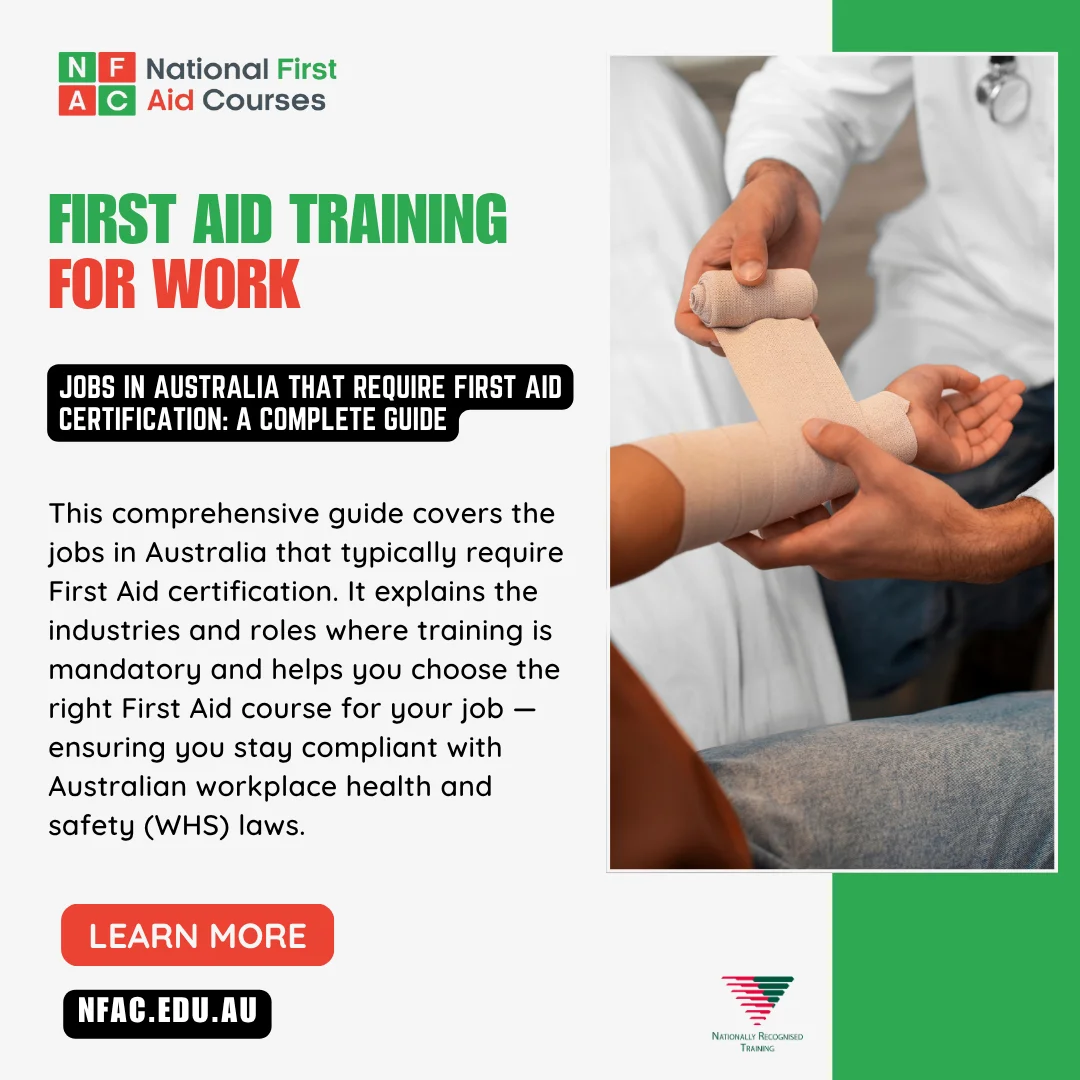
Jobs in Australia That Require First Aid Certification: A Complete Guide
In this guide, we’ll break down the jobs and industries in Australia that require First Aid certification, from construction and healthcare to childcare, mining, and more. You’ll learn which roles have mandatory training requirements, how often certificates need to be refreshed, and which course — Provide First Aid, CPR, or Childcare First Aid — applies to your workplace. Plus, we’ll explain how staying certified keeps you compliant with WHS laws and gives you the confidence to act when it matters most.

Popular Summer Jobs in Australia: How First Aid Training Can Get You Hired
In this article, we look at why First Aid and CPR training is a must-have skill for anyone volunteering at summer events across Australia. From community festivals to sports carnivals and charity fundraisers, we cover the safety expectations, heat-related risks, and the accredited training that ensures you’re ready to act fast when emergencies strike in the summer heat.
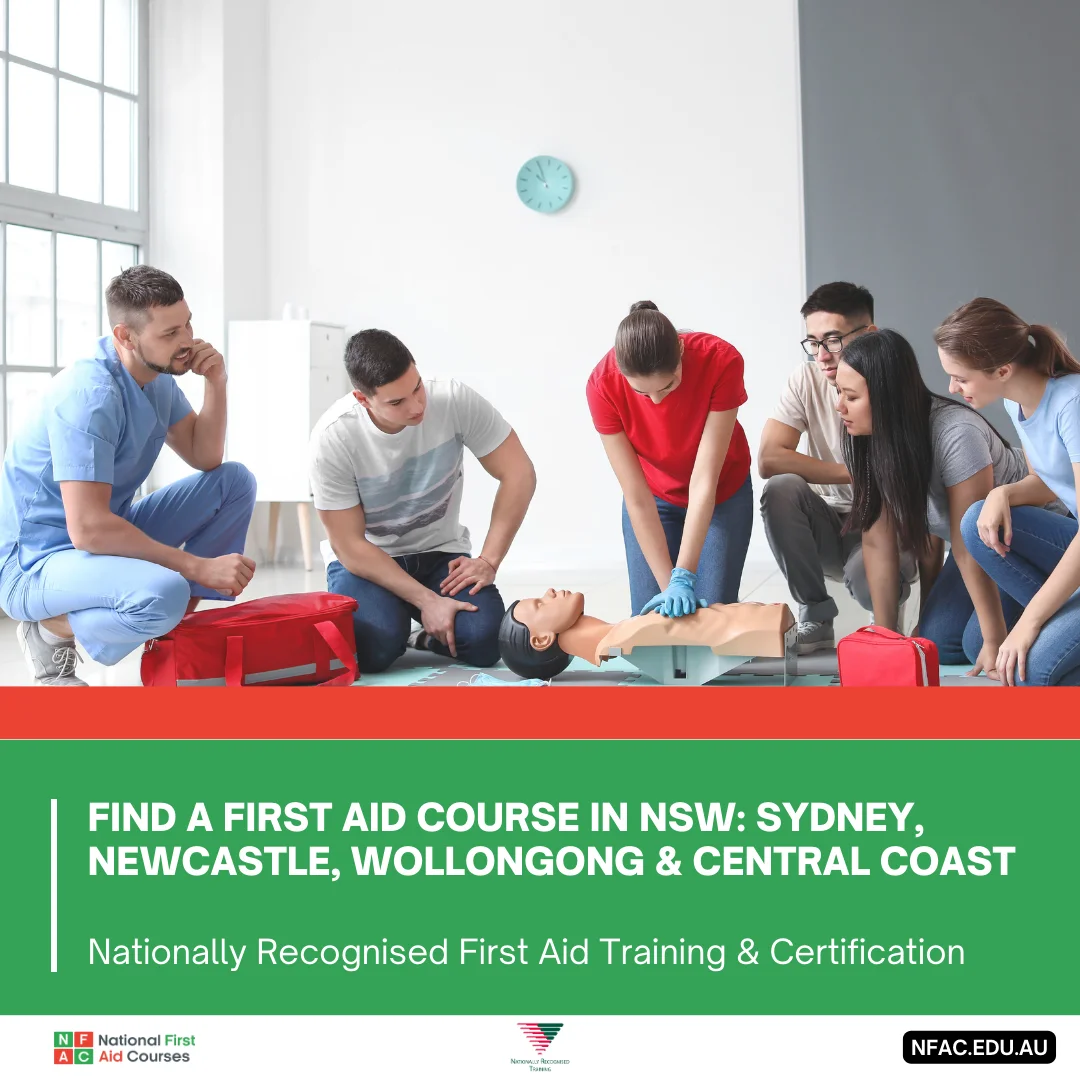
Find a First Aid Course in NSW: Sydney, Newcastle, Wollongong, Central Coast & More
In this guide, we’ll show you exactly how to find the best First Aid course in New South Wales — whether you’re in Sydney, Newcastle, Erina, or Wollongong. From understanding accredited training requirements to comparing face-to-face vs online options, you’ll learn what matters most before booking. Plus, we’ll share tips for choosing a provider that guarantees practical, hands-on skills you can trust in an emergency.
